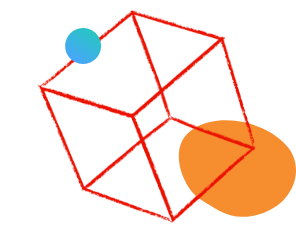This conversation has been locked due to inactivity. Please create a new post.



This conversation has been locked due to inactivity. Please create a new post.

Hi guys,
I'm looking to add a key value to a cq dialog.
I can use granite/ui/components/coral/foundation/form/multifield combined with granite/ui/components/coral/foundation/form/textfield to get a list, but what about a map?
I.e. I need users to be able to specify keys and corresponding value?
Thanks!
Solved! Go to Solution.
Views
Replies
Total Likes

Your requirement to allow authors to insert custom Key Pair Values from the Granite UI dialogue is possible. Simply use the Multifield and two, child text-field Granite UI components for your dialogue configuration.
An example of a configured dialogue would look something like this:
Here's how the Granite UI configuration XML example:
<keypairvalue
jcr:primaryType="nt:unstructured"
sling:resourceType="granite/ui/components/coral/foundation/form/multifield"
composite="{Boolean}true"
fieldLabel="Key Pair Example">
<field
jcr:primaryType="nt:unstructured"
sling:resourceType="granite/ui/components/coral/foundation/container"
name="./keypairvalue">
<items jcr:primaryType="nt:unstructured">
<fieldset
jcr:primaryType="nt:unstructured"
jcr:title="Key pair Values"
sling:resourceType="granite/ui/components/coral/foundation/form/fieldset">
<items jcr:primaryType="nt:unstructured">
<key
jcr:primaryType="nt:unstructured"
sling:resourceType="granite/ui/components/coral/foundation/form/textfield"
fieldLabel="Key"
name="./key"/>
<value
jcr:primaryType="nt:unstructured"
sling:resourceType="granite/ui/components/coral/foundation/form/textfield"
fieldLabel="Value"
name="./value"/>
</items>
</fieldset>
</items>
</field>
</keypairvalue>
After the component have been configured and saved, your JCR node structure should be organised as so:
Now your content should be structured and can be easily extracted by your AEM backend bundles.
I hope this helps,
Brian.

Your requirement to allow authors to insert custom Key Pair Values from the Granite UI dialogue is possible. Simply use the Multifield and two, child text-field Granite UI components for your dialogue configuration.
An example of a configured dialogue would look something like this:
Here's how the Granite UI configuration XML example:
<keypairvalue
jcr:primaryType="nt:unstructured"
sling:resourceType="granite/ui/components/coral/foundation/form/multifield"
composite="{Boolean}true"
fieldLabel="Key Pair Example">
<field
jcr:primaryType="nt:unstructured"
sling:resourceType="granite/ui/components/coral/foundation/container"
name="./keypairvalue">
<items jcr:primaryType="nt:unstructured">
<fieldset
jcr:primaryType="nt:unstructured"
jcr:title="Key pair Values"
sling:resourceType="granite/ui/components/coral/foundation/form/fieldset">
<items jcr:primaryType="nt:unstructured">
<key
jcr:primaryType="nt:unstructured"
sling:resourceType="granite/ui/components/coral/foundation/form/textfield"
fieldLabel="Key"
name="./key"/>
<value
jcr:primaryType="nt:unstructured"
sling:resourceType="granite/ui/components/coral/foundation/form/textfield"
fieldLabel="Value"
name="./value"/>
</items>
</fieldset>
</items>
</field>
</keypairvalue>
After the component have been configured and saved, your JCR node structure should be organised as so:
Now your content should be structured and can be easily extracted by your AEM backend bundles.
I hope this helps,
Brian.
Views
Likes
Replies
Views
Likes
Replies